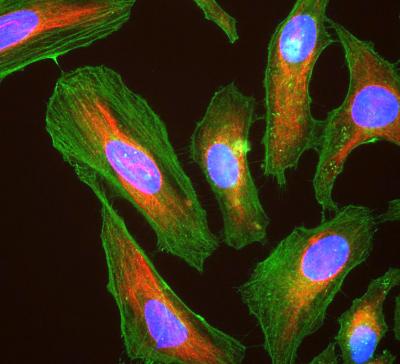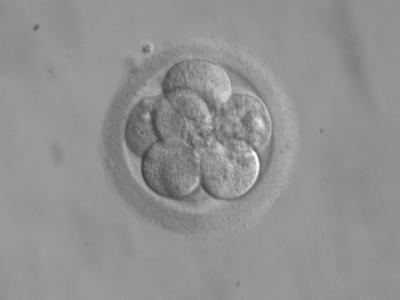Property in human genetic material: An old legal question for a new technological age
Posted:
Time to read:
Some time ago I was invited to contribute a chapter to The Oxford Handbook of Comparative Health Law on property in human genetic material. I could see that this would be a chapter on property in human bodily material, but with a twist. The twist came from the reference to genetic rather than bodily material, which signaled a belief that the genetic significance of bodily material might require a different property analysis.
The belief is not unreasonable. This is because ‘genetic material’ is not merely part of the corporeal body, analogous to saliva or a scraping of skin, but also contains the rules (genetic code) on which cells depend to function. Hence its importance in the biotech and pharmaceutical fields, where genetic material is routinely used to derive new diagnostic tools and medicines.

Cell line of Henrietta Lacks
Wikimedia Commons
Where products have value – and there can be no doubt that genetic material has value, including commercial value – they will inevitably be commercialized, and treated in the manner of property objects. Then, the only question for the state will be how if at all to regulate their treatment. Much of the property debate regarding bodily material starts from this position, and divides into those scholars, such as Professors Imogen Goold and Muireann Quigley, who argue for a regulatory approach that recognises both the capacity of (personal) property rights to extend to bodily material and the suitability of bodily material for protection by property, and those scholars, such as Professor Jonathan Herring, who object that the special nature of bodily material requires bespoke legal (statutory) provision. But while these debates take place, the law develops in its own piecemeal and often reactive way. A key aspect of that development has been the recognition of property rights, including personal and intellectual property rights, in tangible and intangible objects derived from or incorporating bodily material. For the untutored eye, and even for the tutored one, the distinction between bodily material “as such” and objects derived from or incorporating it can be difficult to draw. Nonetheless, it’s an important distinction, not only in determining whether property exists and what rights it confers, but also in identifying its beneficiaries. For example, where the property object is bodily material, the presumptive beneficiary will usually be the person from whose body the material derived. In contrast, where the property object is an invention or other object derived from or incorporating bodily material, the presumptive beneficiary will be the person responsible for devising or producing the invention or other object.
Property in genetic material might strike some as a rather dry topic for extended analysis. But this would be a misleading impression. It raises important questions about the nature of property rights, including how they differ from other species of (personal and fundamental) rights. It also raises questions about how property rights come to exist and be recognized, and the moral limits (if any) on their existence and recognition. And it raises questions about how the exploitation of property rights is and should (if at all) be limited. These questions are complex and difficult, particularly in a regulatory environment characterized by rapid social and technological change and uncertainty. But the impact of property rights on the political economy requires that we devote attention to them. Given the seemingly insatiable appetite for property that exists among scholars and policy-makers, and the pragmatic view that many take of property rights – each evidenced by the calls recently to recognize ownership rights in so-called “personal” and “industrial” data, including presumably the genetic information stored in human bodily material itself (which is both personal and industrial) – these are matters on which we ought not to be complacent.

Property claims have frequently been made in respect of human embryos and other reproductive materials, with different results.
Wikimedia Commons
This brings me to the substance of my chapter itself. In keeping with the aim of Oxford Handbooks to offer authoritative and up-to-date surveys of particular areas, the chapter offers an in-depth survey of the current legal position concerning property in bodies and bodily materials. Of especial relevance in the current age of advanced genetic and other bio technologies, it looks beyond property in bodies and their materials “as such” to consider also (a) the availability of rights of personal and intellectual property in objects incorporating or derived from them, and (b) the reliance on quasi-property rights of possession and consent to regulate the storage and use of corpses and detached bodily materials, including so-called “bio-specimens”. Reasoning from first principles, it highlights the practical and conceptual, as well as the political and philosophical, difficulties in this area, along with certain differences in the regulatory approach of European and US authorities. By way of conclusion, it proposes the law of authors’ and inventors’ rights as simultaneously offering a cautionary tale to those who would extend the reach of property even further than it extends currently and ideas for exploiting the malleability of the “property” concept to manage the risks of extending it.
In this respect, the experience of intellectual property offers some support at least for Professor Herring’s belief in the capacity of a tailored statutory regime to balance the benefits of protection against their risks and costs. For example, it is in the name of achieving such a balance overall that patents require application to and registration by the state, and are conditional upon an applicant’s ability to demonstrate that the invention for which the patent is sought is new, inventive, susceptible of industrial application, and clearly and sufficiently described in the patent application. It is also in the name of balance that certain inventions are ineligible for patent protection, including methods of medical treatment, plant and animal varieties, and inventions the commercialisation of which would be contrary to morality or public policy; that the rights conferred by a patent do not extend to use of the invention (being solely exclusionary in nature) and expire after 20 years; and that the persons who devise inventions, whether or not they are also the patentees, enjoy certain “moral rights”, equivalent in conception to fundamental rights, including the rights to be recognized as having devised their inventions and to share in any profits that patents granted for their inventions generate. And finally, it is in the name of balance overall that the freedom of patentees to exploit their property is limited by competition laws and other patent-specific mechanisms, such as compulsory licensing, and that states are required by international and regional measures to support “the fair and equitable sharing” of any (patent-derived or other) benefits arising from the use of other states’ genetic resources when devising technologies. In these and other ways, the property conferred by patents is limited and supplemented by certain rights analogous to those of reputation and bodily integrity aimed at recognising and protecting the interests of persons beyond the patentees, including the donors of any bodily materials used to devise a patented invention, the persons responsible for devising it, and any third parties needing access to it for essential medical or other reasons.
Hence my argument that intellectual property offers some evidence for the capacity of bespoke statutory regimes to recognize and accommodate the diverse interests and values at stake in the regulation of human genetic and other bodily materials, consistent with the arguments of certain (personal) property and medical law theorists. The challenges in this regard should not be underestimated, however. In an era in which rapidly advancing digital and bio technologies are increasing exponentially the practical value of bodily materials by unlocking their genetic (informational and therapeutic) properties, there is a need for great caution in how we proceed. The experience of IP over several centuries demonstrates clearly this need, and the tendency of even the most carefully drafted property regimes to reflect a certain insularity in perspective, and to prioritise commercial interests at the expense of public interests. Hence the importance also of IP as a cautionary tale for those optimistic about the potential for the recognition of property rights in human bodily material to empower individuals in the face of ever expanding scientific and technological goals and imperatives.
__________
How to cite this blog post (Harvard style)
Pila, J. (2020). Property in human genetic material: An old legal question for a new technological age. Available at: https://www.law.ox.ac.uk/research-and-subject-groups/property-law/blog/2020/05/property-human-genetic-material-old-legal (Accessed [date]).
Share:
